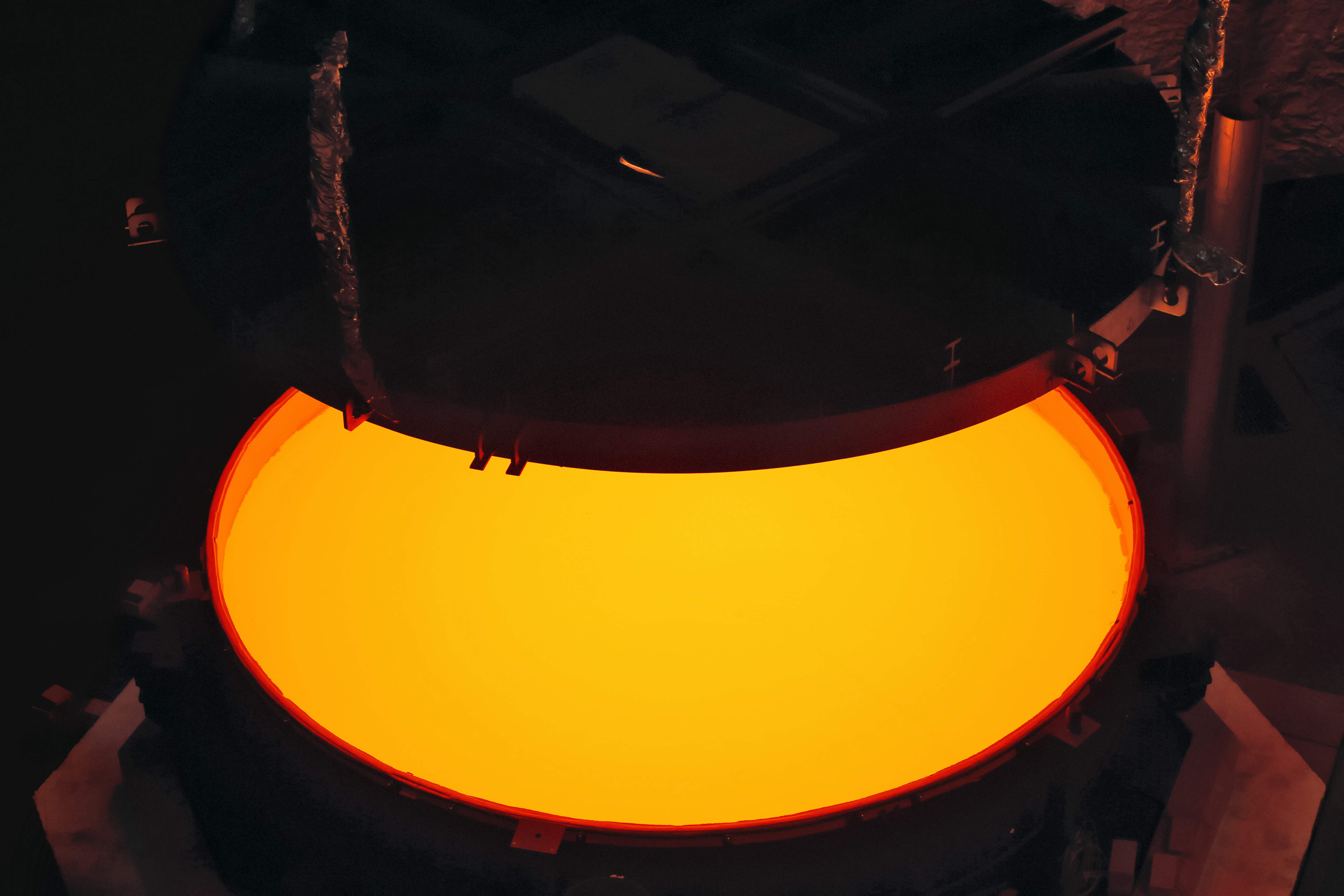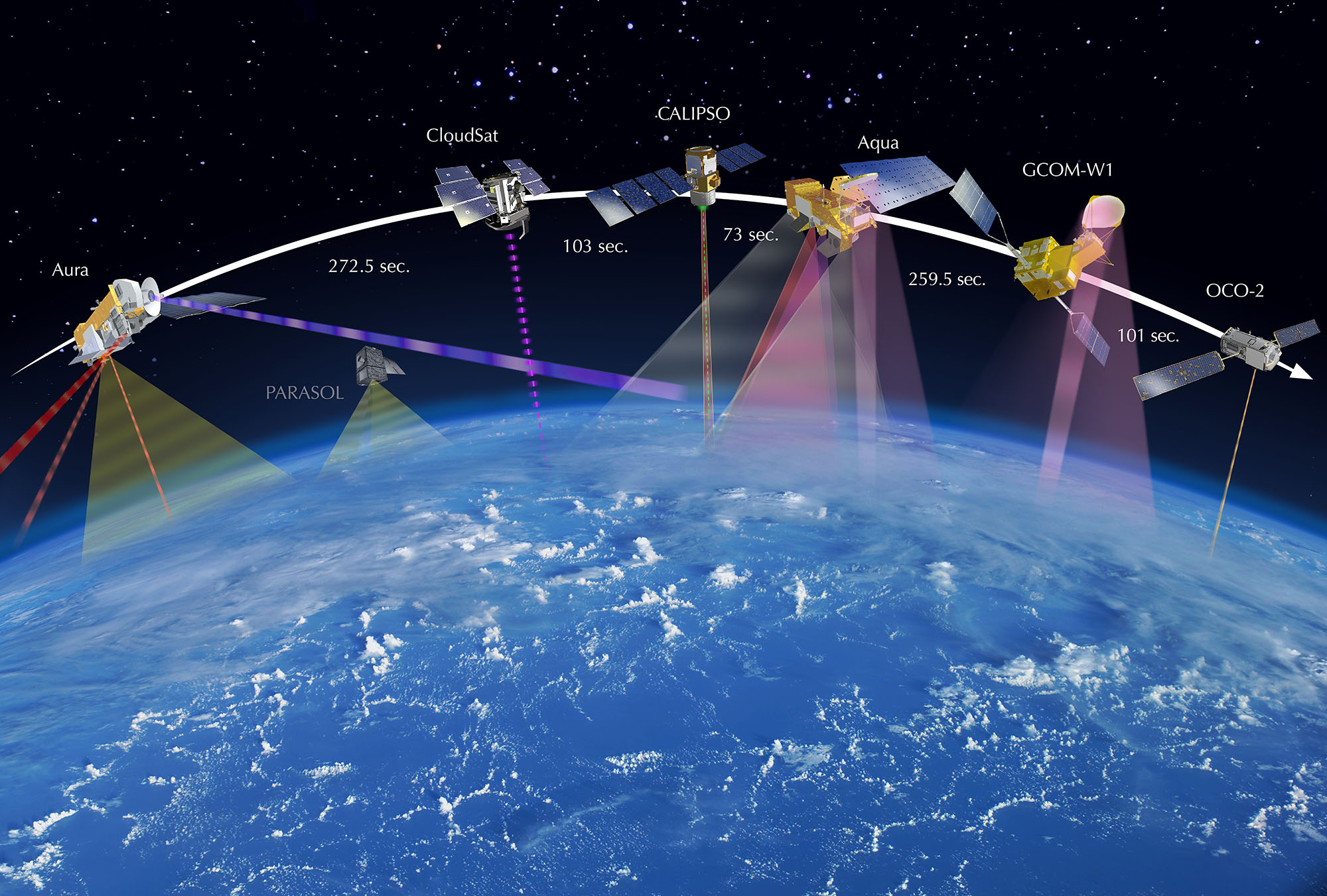|
Zerodur
Zerodur is a lithium-aluminosilicate glass-ceramic manufactured by Schott AG. Zerodur has a near zero coefficient of thermal expansion (CTE), and is used for high-precision applications in telescope optics, microlithography machines and inertial navigation systems. Manufacturing process Zerodur is produced in a two-step process involving melting and ceramization. Depending of the size of the blanks, each step can take several months. First, raw materials including main components of lithium oxide (Li2O), alumina (Al2O3), and silica (SiO2) are melted at high temperatures of around 1600 °C, poured into molds, and annealed in a controlled cooling process that relieves internal stresses that develop during forming. Then the glass undergoes a ceramization process involved controlled volume crystallization, which creates high-quartz nano-crystallites of 30nm to 50nm. The negative CTE of the crystals compensates for the positive CTE of the residual glass matrix, which giv ... [...More Info...] [...Related Items...] OR: [Wikipedia] [Google] [Baidu] |
Schott AG
Schott AG is a German multinational glass company specializing in the manufacture of glass and glass-ceramics. Headquartered in Mainz, Rhineland-Palatinate, Germany, it is owned by the Carl Zeiss foundation, Carl Zeiss Foundation. The company's founder and namesake, Otto Schott, is credited with the invention of borosilicate glass. History Founding In 1884, Otto Schott, Ernst Abbe, Carl Zeiss and his son Roderich Zeiss founded the ''Glastechnische Laboratorium Schott & Genossen'' (Glass Technical Laboratory Schott & Associates) in Jena, Thuringia, Germany which initially produced optical glasses for microscopes and telescopes. In 1891, the Carl Zeiss Foundation, founded two years earlier by Ernst Abbe, became a partner in the glass laboratory. Jena glass, an early borosilicate glass, was one of its early manufactured products. Otto Schott's invention of borosilicate glass, resistant to chemicals, heat and temperature change, paved the way for new technical glasses for ther ... [...More Info...] [...Related Items...] OR: [Wikipedia] [Google] [Baidu] |
Extremely Large Telescope
The Extremely Large Telescope (ELT) is an astronomical observatory under construction. When completed, it will be the world's largest optical and near-infrared extremely large telescope. Part of the European Southern Observatory (ESO) agency, it is located on top of Cerro Armazones in the Atacama Desert of northern Chile. The design consists of a reflecting telescope with a segmented primary mirror and a diameter secondary mirror. The telescope is equipped with adaptive optics, six laser guide star units, and various large-scale scientific instruments. The observatory's design will gather 100 million times more light than the human eye, equivalent to about 10 times more light than the largest optical telescopes in existence as of 2023, with the ability to correct for atmospheric distortion. It has around 250 times the light-gathering area of the Hubble Space Telescope and, according to the ELT's specifications, will provide images 15 times sharper than those from Hubble. T ... [...More Info...] [...Related Items...] OR: [Wikipedia] [Google] [Baidu] |
Gran Telescopio Canarias
The Gran Telescopio Canarias (GranTeCan or GTC) is a reflecting telescope located at the Roque de los Muchachos Observatory on the island of La Palma, in the Canary Islands, Spain. It is the List of largest optical reflecting telescopes, world's largest single-aperture optical telescope. Construction of the telescope took seven years and cost €130 million. Its installation was hampered by weather conditions and the logistical difficulties of transporting equipment to such a remote location. First light was achieved in 2007 and scientific observations began in 2009. The GTC Project is a partnership formed by several institutions from Spain and Mexico, the University of Florida, the National Autonomous University of Mexico, and the Instituto de Astrofísica de Canarias (IAC). Planning for the construction of the telescope, which started in 1987, involved more than 1,000 people from 100 companies. The division of telescope time reflects the structure of its financing: 90% ... [...More Info...] [...Related Items...] OR: [Wikipedia] [Google] [Baidu] |
Glass-ceramic
Glass-ceramics are polycrystalline materials produced through controlled crystallization of base glass, producing a fine uniform dispersion of crystals throughout the bulk material. Crystallization is accomplished by subjecting suitable glasses to a carefully regulated heat treatment schedule, resulting in the nucleation and growth of crystal phases. In many cases, the crystallization process can proceed to near completion, but in a small proportion of processes, the residual glass phase often remains. Glass-ceramic materials share many properties with both glasses and ceramics. Glass-ceramics have an amorphous phase and one or more crystalline phases and are produced by a so-called "controlled crystallization" in contrast to a spontaneous crystallization, which is usually not wanted in glass manufacturing. Glass-ceramics have the fabrication advantage of glass, as well as special properties of ceramics. When used for sealing, some glass-ceramics do not require brazing but can w ... [...More Info...] [...Related Items...] OR: [Wikipedia] [Google] [Baidu] |
Coefficient Of Thermal Expansion
Thermal expansion is the tendency of matter to increase in length, area, or volume, changing its size and density, in response to an increase in temperature (usually excluding phase transitions). Substances usually contract with decreasing temperature (thermal contraction), with rare exceptions within limited temperature ranges ('' negative thermal expansion''). Temperature is a monotonic function of the average molecular kinetic energy of a substance. As energy in particles increases, they start moving faster and faster, weakening the intermolecular forces between them and therefore expanding the substance. When a substance is heated, molecules begin to vibrate and move more, usually creating more distance between themselves. The relative expansion (also called strain) divided by the change in temperature is called the material's coefficient of linear thermal expansion and generally varies with temperature. Prediction If an equation of state is available, it can be used t ... [...More Info...] [...Related Items...] OR: [Wikipedia] [Google] [Baidu] |
Very Large Telescope
The Very Large Telescope (VLT) is an astronomical facility operated since 1998 by the European Southern Observatory, located on Cerro Paranal in the Atacama Desert of northern Chile. It consists of four individual telescopes, each equipped with a primary mirror that measures in diameter. These optical telescopes, named ''Antu'', ''Kueyen'', ''Melipal'', and ''Yepun'' (all words for astronomical objects in the Mapuche language), are generally used separately but can be combined to achieve a very high angular resolution. The VLT array is also complemented by four movable Auxiliary Telescopes (ATs) with apertures. The VLT is capable of observing both visible and infrared wavelengths. Each individual telescope can detect objects that are roughly four billion times fainter than what can be seen with the naked eye. When all the telescopes are combined, the facility can achieve an angular resolution of approximately 0.002 arcsecond. In single telescope mode, the angular resol ... [...More Info...] [...Related Items...] OR: [Wikipedia] [Google] [Baidu] |
Meteosat
The Meteosat series of satellites are geostationary meteorological satellites operated by EUMETSAT under the Meteosat Transition Programme (MTP) and the Meteosat Second Generation (MSG) program. The MTP program was established to ensure the operational continuity between the end of the successful Meteosat Operational Programme in 1995 and Meteosat Second Generation (MSG), which came into operation at the start of 2004 using improved satellites. The MSG program will provide service until the MTG (Meteosat Third Generation) program takes over. __TOC__ First generation The first generation of Meteosat satellites, Meteosat-1 to Meteosat-7, provided continuous and reliable meteorological observations from space to a large user community. Meteosat-1 to -7 have all now retired. When operational, the Meteosat First Generation provided images every half-hour in three spectral channels (Visible, Infrared) and Water vapor, Water Vapour, via the Meteosat Visible and Infrared Imager (MVIR ... [...More Info...] [...Related Items...] OR: [Wikipedia] [Google] [Baidu] |
European Southern Observatory
The European Organisation for Astronomical Research in the Southern Hemisphere, commonly referred to as the European Southern Observatory (ESO), is an intergovernmental organization, intergovernmental research organisation made up of 16 member states for ground-based astronomy. Created in 1962, ESO has provided astronomers with state-of-the-art research facilities and access to the southern sky. The organisation employs over 750 staff members and receives annual member state contributions of approximately €162 million. Its observatories are located in northern Chile. ESO has built and operated some of the largest and most technologically advanced telescopes. These include the 3.6 m New Technology Telescope, an early pioneer in the use of active optics, and the Very Large Telescope (VLT), which consists of four individual 8.2 m telescopes and four smaller auxiliary telescopes which can all work together or separately. The Atacama Large Millimeter Array observes the u ... [...More Info...] [...Related Items...] OR: [Wikipedia] [Google] [Baidu] |
SOFIA
Sofia is the Capital city, capital and List of cities and towns in Bulgaria, largest city of Bulgaria. It is situated in the Sofia Valley at the foot of the Vitosha mountain, in the western part of the country. The city is built west of the Iskar (river), Iskar river and has many mineral springs, such as the Sofia Central Mineral Baths. It has a humid continental climate. Known as Serdica in Classical antiquity, antiquity, Sofia has been an area of human habitation since at least 7000 BC. The recorded history of the city begins with the attestation of the conquest of Serdica by the Roman Republic in 29 BC from the Celtic settlement of Southeast Europe, Celtic tribe Serdi. During the decline of the Roman Empire, the city was raided by Huns, Visigoths, Pannonian Avars, Avars, and Slavs. In 809, Serdica was incorporated into the First Bulgarian Empire by Khan (title), Khan Krum and became known as Sredets. In 1018, the Byzantine Empire, Byzantines ended Bulgarian rule until 1194, ... [...More Info...] [...Related Items...] OR: [Wikipedia] [Google] [Baidu] |
Earth Observation Satellite
An Earth observation satellite or Earth remote sensing satellite is a satellite used or designed for Earth observation (EO) from orbit, including spy satellites and similar ones intended for non-military uses such as environmental monitoring, meteorology, cartography and others. The most common type are Earth imaging satellites, that take satellite images, analogous to aerial photographs; some EO satellites may perform remote sensing without forming pictures, such as in GNSS radio occultation. The first occurrence of satellite remote sensing can be dated to the launch of the first artificial satellite, Sputnik 1, by the Soviet Union on October 4, 1957. Sputnik 1 sent back radio signals, which scientists used to study the ionosphere. The United States Army Ballistic Missile Agency launched the first American satellite, Explorer 1, for NASA's Jet Propulsion Laboratory on January 31, 1958. The information sent back from its radiation detector led to the discovery of the Earth's Van ... [...More Info...] [...Related Items...] OR: [Wikipedia] [Google] [Baidu] |
LISA Pathfinder
LISA Pathfinder, formerly Small Missions for Advanced Research in Technology-2 (SMART-2), was an ESA spacecraft that was launched on 3 December 2015 on board Vega flight VV06. The mission tested technologies needed for the Laser Interferometer Space Antenna (LISA), an ESA gravitational wave observatory planned to be launched in 2035. The scientific phase started on 8 March 2016 and lasted almost sixteen months. In April 2016 ESA announced that LISA Pathfinder demonstrated that the LISA mission is feasible. The estimated mission cost was €400 million. Mission LISA Pathfinder placed two test masses in a nearly perfect gravitational free-fall, and controlled and measured their relative motion with unprecedented accuracy. The laser interferometer measured the relative position and orientation of the masses to an accuracy of less than 0.01 nanometres, a technology estimated to be sensitive enough to detect gravitational waves by the follow-on mission, the Laser Interferomete ... [...More Info...] [...Related Items...] OR: [Wikipedia] [Google] [Baidu] |









